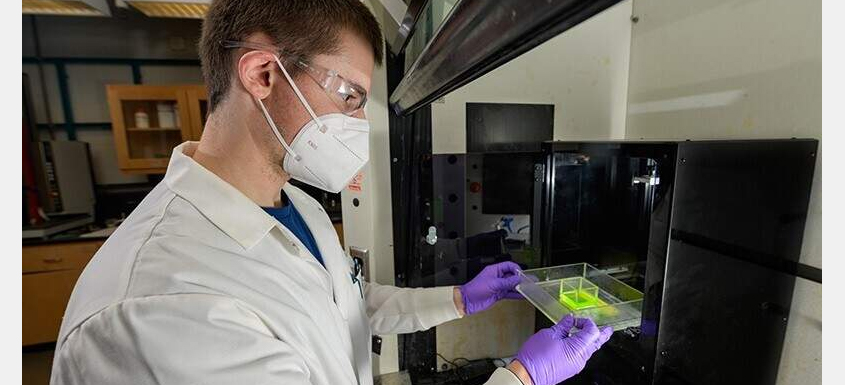UD researchers report low-pressure method to convert industrially processed biomass into plastics, chemicals
It’s no secret that we need more sustainable materials if we hope to help the planet. Bio-derived materials are one potential option, but they must be economical if anyone is going to use them.
For instance, a better bio-based milk jug would be great. However, if the milk sells for $20 per gallon because the cost of the jug increases from $1 to $17, no one will buy it.
Led by Professor Thomas H. Epps, III, a team of University of Delaware researchers and collaborators from CanmetENERGY are keeping just this type of economics in mind as they look for ways to upcycle biomass into new products. Take lignin, for example. Lignin is a component of plants and trees that provides strength and stiffness to help the flora stand up to what Mother Nature throws its way.
In the pulp and paper industry, however, lignin is a waste left over from making paper products. This type of lignin, known as technical lignin, is considered the dirtiest of the dirty, something that isn’t usable — except maybe to burn for heat or to add to tires as filler.
The UD researchers say this widely available resource — about 100 million tons of technical lignin waste is generated annually in pulp and paper mills around the world — can be much more valuable.
The team has demonstrated that it is possible to efficiently turn industrially processed lignin into high-performance plastics, such as bio-based 3D-printing resins, and valuable chemicals. An economic and life-cycle analysis reveals the approach can be competitive with similar petroleum-based products, too.
A paper describing the new method was published on Wednesday, Jan. 19, in Science Advances. The work was supported primarily by funding from the National Science Foundation Growing Convergence Research (NSF GCR) program, which aims to solve problems through multi-pronged, interdisciplinary collaboration.
Source: University of Delaware - UDaily
Legal Notice: Paper Advance is not responsible for the accuracy or availability of content on external websites.













